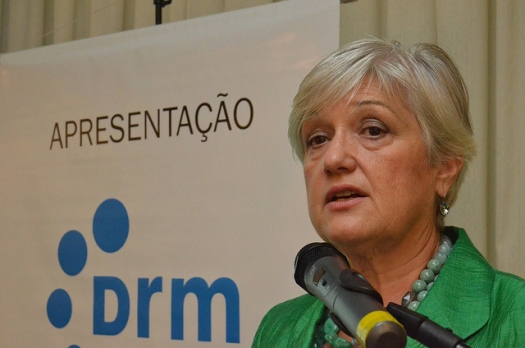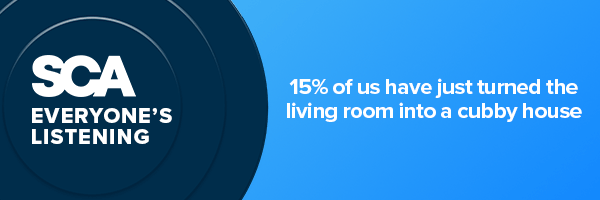After reading the Australian Communications and Media Authority’s final report on the Future Delivery of Radio earlier this month, based on 22 submissions (including the one sent by the DRM Consortium), the Chair of the Digital Radio Mondiale Consortium, Ruxandra Obreja has contributed this article to radioinfo.
The ACMA concluded that due to Australia’s diverse geography and listeners’ requirements, a mix of radio platforms will be considered in the future. The FM and DAB+ current solutions available in Australia cannot replicate the wide AM coverage advantages.
As stated in the ACMA report, AM will continue to be an important delivery mechanism for radio broadcasts in the regional and remote Australia. AM radio and its digital version offered by Digital Radio Mondiale (DRM) can match the coverage of high-power AM services. ACMA considers it useful to ‘explore the feasibility and desirability of adding DRM technology’ to Australia’s domestic delivery platform mix. “Chipsets which include DRM for AM are available and installed in cars for the Indian market”, states the ACMA report.
ACMA stressed that both ABC and CBAA view DRM for FM as a possible solution to “digitise the sub-metropolitan community radio services that generally do not have DAB+ access. CBAA also noted that DRM for FM could be used to provide additional digital radio services” (see the full ACMA Report here).
Following ACMA’s report we would like to stress the reasons why the Australian stakeholders should now plan for testing and rolling out the DRM standard (ITU and ETSI recommended) to achieve a comprehensive action plan for a full and modern digital coverage of the whole country.
This will serve medium-sized or smaller communities in isolated towns and areas, as well as community stations in bigger cities where the current multiplexes are either too expensive or too full. DRM digital transmissions of programmes (simultaneous and in several languages) can be offered by upgrading and possibly sharing the existing transmission infrastructure.
DRM enables broadcasters to transmit a great variety of information and educational programmes. In parallel DRM allows the authorities to use the digital radio network to trigger emergency alerts in case of disasters with information in several languages, both in text and audio format. The communities in disaster zones can be targeted with emergency alerts separately, while the regular programmes can continue to be broadcast to the unaffected areas and communities.
Digital Radio Mondiale™ (DRM) is the only global, green, cost and spectrum efficient, openly standardised digital broadcasting system able to cover a country / continent entirely without any gaps, due to the fact that it runs on all frequency bands.
The DRM digital standard can carry up to 3 digital radio programs along with data services on a single radio frequency (for the FM band on a 96 kHz bandwidth). It can utilise the existing transmission infrastructure of a broadcaster for a more energy efficient service (50%-80% energy savings!), allowing the radio broadcaster to stay in control of their own broadcast infrastructure (studios, transmitters, antennas) without having to rely on expensive third-party multiplex services.
DRM revolutionises the radio experience by offering a user friendly program selection by station label, better-than-FM audio quality using the latest audio codec xHE-AAC, with optional 5.1 MPEG surround sound wherever the listeners are located in Australia, a range of standardised data application such as DRM Text Messages, Journaline advanced text, Slideshows, EPG, TPEG traffic updates, etc. All DRM text content is Unicode based and supports all languages and scripts.
DRM supports single frequency network operations (SFN) to serve a region or even the whole country on a single broadcast frequency for optimised listener coverage.
DRM is also the perfect medium for data transmissions to personal receivers or to public electronic billboards – for advertising purposes and other important information such as emergency alerts. DRM has also been proven (Germany, US) to be an effective distribution of data (text, video, ausio) to ships sailing around the continents.
It would be very useful if radio broadcasters could use the opportunity to familiarise themselves with DRM by planning short trials / demonstrations which would enable them to experience all the benefits this most modern and technologically advanced digital radio standard can offer them.
We, as a not-for-profit Consortium gathering the best DRM experts in the world, can offer information, practical advice on how to test and roll out the standard, respecting your own policy and the digital successes you have already achieved.
Contact:
RUXANDRA OBREJA
Digital Radio Mondiale – Consortium Chairman, London
e-mail: [email protected]
Subscribe to the radioinfo daily flash briefing podcast on these platforms: Acast, Apple iTunes Podcasts, Podtail, Spotify, Google Podcasts, TuneIn, or wherever you get your podcasts.






Why don'tWhy don't we ask Ruxandra to tell the Australian consumer market they will need to buy another new radio to hear DRM services... Or how about we just run with DAB+ for metro/provincial and FM for regionals. We already have both technologies and won't annoy our audiences with yet another standard.
Darren,
Around 60 % of the population live in capital cities all with large populations. DAB+ is ideal here because you have enough stations to feed the around 20 radio programs per transmitter.
In country areas a commercial broadcaster has an AM licence and a supplementary FM licence. There isn't the population to pay for DAB+
In most of Australia there is only 8 DAB+ transmission channels and for high power transmitters, there must be a spacing of at least 336 km to prevent interference on the same channel. The coverage area is lucky to be 100 km radius.
FM coverage area is of similar areas for high powered transmitters but many country ones are of much lower power thus reducing their coverage area.
DRM on the other hand uses lower frequencies and so can cover much larger areas even the whole of Australia from one transmitter and is ideal for regional and remote areas. There are hundreds of channels available.
The DAB+ and the DRM receivers are very similar except for the tuning of the station, however nearly all DAB+ receivers can only show a line of scrolling text where as all DRM receivers have a much larger colour screen for pictures and Journaline text. DAB+ could do this too, but broadcasters and importers are not supporting it in a meaningful way.
Lastly with all the fires, DRM/DAB+ can wake a radio from standby, increase the volume, make a siren sound and speak warning messages. In addition show a map of the emergency area and an indexed multipage display of detailed text instructions. The Emergency warning can be sent to all radios but only those in the specified area will respond, the other keep on with normal programs. Some of this was trialed in Darwin by Grant Broadcasters, but that's as far as it went. It is not much use without the decent sized screen. This is particularly useful, when the mobile phone tower which are usually on the tops of hills and their power line is burnt down, phones don't work, which is also true of Wireless NBN in rural areas so there is no communications left except radio, provided the populations still owns one.